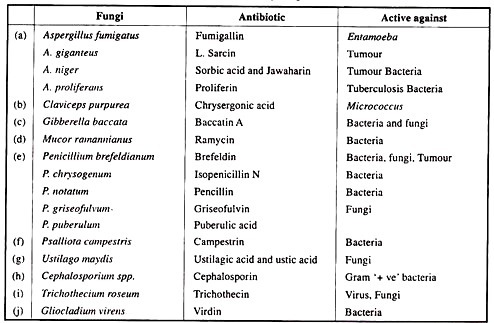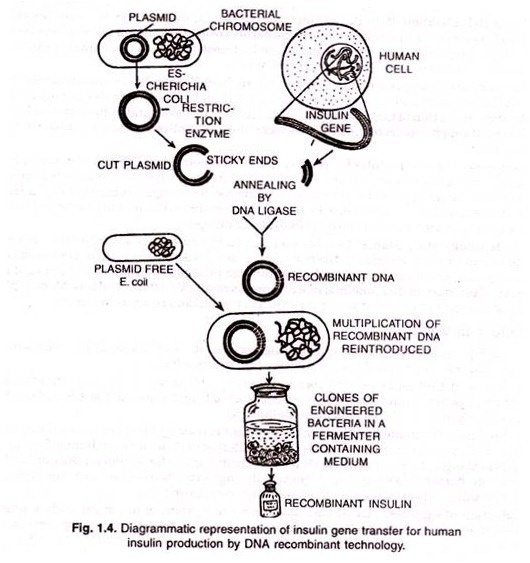In this article we will discuss about the History and Phases of Calvin Cycle.
History of Calvin Cycle:
The cycle was discovered by Calvin, Benson and their colleagues in California, U.S.A. They fed Chlorella and Scenedesmus with radioactive 14C in carbon dioxide. Radioactive carbon, 14C has a half life of 5568 years.
Therefore, the path of CO2 fixation can be easily traced with its help. Algal suspension illuminated and carrying out photosynthesis with normal carbon dioxide was supplied with 14CO2. The alga was killed at intervals in near boiling methanol.
It immediately stopped photosynthetic activity due to denaturation of enzymes. Alcohol was evaporated and after crushing the alga, the product was made into paste. The paste was placed on paper chromatogram and the different compounds were separated by two dimensional chromatography first developed by Martin and Synge (1941).
An X-ray film was then pressed against the paper chromatogram. The film developed spots where radioactive compounds were present. The process is called autoradiography. The radioactive compounds were identified by comparing their position on the chromatogram with standard chemicals.
Calvin and co-workers found that after three seconds, radioactivity appeared in phosphoglyceric acid or PGA. Phosphoglyceric acid is, therefore, the first stable product of photosynthesis. Radioactivity was also found out to be present in only one carbon of this compound which happened to be the first one.
Apparently only the first carbon group of the chemical came from CO2 while the rest were contributed by some acceptor molecule. A number of other compounds having radioactivity were found after intervals of 5, 10, 15 and 30 seconds.
They included hexoses, tetroses, pentoses, heptoses. After 60 seconds, all the three carbon atoms of PGA were radioactive indicating cycling of reactions. After many painstaking calculations, Calvin worked out the pathway of CO2 fixation. The primary acceptor molecule was found out by Basham to be ribulose-1, 5- bi-phosphate or RuBP.
Phases of Calvin Cycle:
Photosynthetic Carbon Reduction (PCR) Cycle or Calvin cycle occurs in all photosynthetic plants whether they have C3 or C4 pathways. It is divided into the following three phases— carboxylation, glycolytic reversal and regeneration of RuBP (Fig. 13.21).
1. Carboxylation:
Carboxylation is the addition of carbon dioxide to another substance called acceptor. Photosynthetic carboxylation requires ribulose-1, 5-bi-phosphate or RuBP as acceptor of carbon dioxide and RuBP carboxylase-oxygenase or RuBisCo as enzyme. The enzyme was previously called carboxydismutase.
Rubisco is the most abundant protein of the biological world. It constitutes 16% of chloropiast proteins (40% of soluble leaf proteins). However, it is a slowest enzyme with a turnover of 3 carbon dioxide molecules per second. Rubisco is located in the stroma on the outer surface of thylakoid membranes.
Carbon dioxide combines with ribulose-1, 5-bio-phosphate to produce a transient intermediate compound called 2-carboxy 3-keto 1, 5-bi-phosphoribotol. The intermediate splits up immediately in the presence of water to form the two molecules of 3-phosphoglyceric acid or PGA. It is the first stable product of photosynthesis.
2. Glycolytic Reversal:
The processes involved in this step or phase are reversal of the processes found during glycolysis part of respiration. Phosphoglyceric acid or PGA is further phosphorylated by ATP with the help of enzyme triose phosphate kinase (phosphoglycerate kinase). It gives rise to 1, 3-biphosphoglyeerie acid.
Biphosphoglyceric acid is reduced by NADPH through the agency of enzyme glyceraldehyde 3-phosphate dehydrogenase (triose phosphate dehydrogenase). It produces glyceraldehyde 3-phosphate or 3-phosphoglyceraldehyde.
Glyceraldehyde-3-phosphate is a key product which is used in synthesis of both carbohydrates and fats. For forming carbohydrates, say glucose, a part of it is changed into its isomer called dihydroxyacetone-3-phosphate. The enzyme that catalyses the reaction is phosphotriose isomerase.
The two isomers condense in the presence of enzyme aldolase forming fructose 1,6- bi-phosphate.
Fructose 1,6-bi-phosphate (FBP) loses one phosphate group, forms fructose 6-phosphate (F 6-P) which is then changed to glucose-6- phosphate (G 6-P). The latter can produce glucose or become part of sucrose and polysaccharide.
As glucose is a six carbon compound, six turns of Calvin cycle are required to synthesise its one molecule.
3. Regeneration of RuBP:
Fructose 6-phosphate (F 6-P) and glyceraldehyde 3-phosphate (GAP) react to form erythrose 4-phosphate (E 4-P) and xylulose 5-phosphate (X 5-P). Erythrose 4-phosphate combines with dihydroxy acetone 3-phosphate to produce sedoheptulose 1: 7 diphosphate (SDP)which loses a molecule of phosphate and gives rise to sedoheptulose 7-phosphate (S 7-P).
Sedoheptulose 7-phosphate reacts with glyceraldehyde 3- phosphate to produce xylulose 5-phosphate (X 5-P) and ribose 5-phosphate. (R 5-P) Both of these are changed to their isomer ribulose 5-phosphate (Ru 5-P). Ribulose 5-phosphate picks up a second phosphate from ATP to become changed into ribulose 1, 5 bi-phosphate (RuBP).





